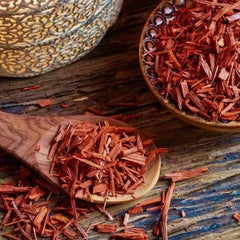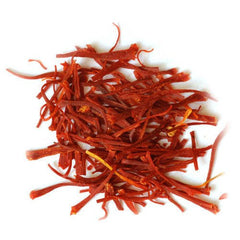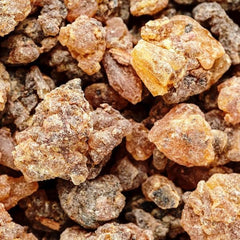What is the Oldest Floral Perfume?
Click For Affordable Inspired Perfume Alternatives
Throughout history, perfumes have served as an expression of beauty, status, and cultural identity. Among the myriad fragrances crafted by ancient civilizations, some have stood the test of time, offering a glimpse into the aromatic preferences of our ancestors. One of the most intriguing questions for enthusiasts and historians alike is: What is the oldest floral perfume known to mankind? Exploring this topic takes us back to ancient times, revealing the sophisticated artistry and natural resources used by early civilizations to craft their signature scents.
What is the Oldest Floral Perfume?
The title of the oldest floral perfume is often attributed to ancient Egyptian formulations, with evidence pointing towards the use of natural floral extracts dating back over 3,000 years. Among these, the renowned "Kyphi" and other early Egyptian perfumes incorporated a variety of fragrant flowers, resins, and oils. However, when specifically considering the earliest known floral scent, the honor generally goes to a perfume called "Musk," which was often combined with floral elements and used extensively in ancient Egypt, Mesopotamia, and surrounding regions.
One of the earliest documented floral perfumes is believed to be a blend of jasmine, lily, and other fragrant flowers, preserved in ancient Egyptian tombs and depicted in hieroglyphs. These perfumes were not only used for personal adornment but also held religious and ceremonial significance.
Ancient Civilizations and Their Floral Fragrances
Ancient civilizations recognized the power of floral scents and developed sophisticated methods to extract and preserve these fragrances. Their approaches laid the groundwork for modern perfumery, and many of their ingredients are still valued today. Here’s an overview of key civilizations and their contributions:
- Ancient Egypt: The Egyptians were pioneers in perfumery, creating complex fragrances using flowers such as jasmine, lily, violet, and lotus. They used methods like enfleurage (a process of extracting fragrance from flowers using fats) and distillation. Perfumes played a crucial role in religious rituals, embalming, and personal grooming.
- Ancient Mesopotamia: Sumerians and Babylonians also cultivated fragrant flowers and used their extracts in perfumes. They valued scents like cypress and myrrh, often combining floral and resinous ingredients.
- Ancient Greece and Rome: The Greeks and Romans adopted Egyptian perfumery techniques, incorporating roses, violets, and other floral elements into their scents. Perfumes became symbols of status and luxury.
These early cultures not only used floral perfumes for adornment but also believed in their spiritual and medicinal properties. The use of flowers like jasmine and lily in rituals underscores their importance in ancient societies.
Key Ingredients of the Oldest Floral Perfumes
Historical records and archaeological findings highlight some recurrent floral ingredients used in ancient perfumes that are considered among the oldest known components:
- Jasmine: Known for its intoxicating scent, jasmine was highly prized in ancient Egypt and the Middle East. It was used both in perfumes and in religious offerings.
- Lily: The lily, symbolizing purity and beauty, was a common floral ingredient in early perfumery, especially in Egypt and Greece.
- Rose: The rose's fragrant petals were distilled into rose water and rose oil, essential in ancient perfumery, particularly in Persia and Egypt.
- Violet: This delicate flower contributed a sweet, subtle aroma to ancient scents, used in combination with other floral notes.
These ingredients were often combined with resins, spices, and oils like myrrh, frankincense, and cedarwood to create complex, long-lasting fragrances.
Methods of Extraction and Preservation in Ancient Times
Ancient perfumers employed various techniques to extract and preserve floral scents, many of which are still influential today:
- Infusion: Flowers were soaked in oils or fats to absorb their fragrance, a method known as enfleurage.
- Distillation: Early distillation techniques allowed for the extraction of essential oils from flowers, notably in Egypt and Mesopotamia.
- Maceration: Flowers were soaked in alcohol or other solvents to produce fragrant extracts.
- Blending: Fragrant oils and resins were combined with floral extracts to create layered scents.
The preservation of these perfumes was vital, as they were expensive and highly valued. The use of natural preservatives like beeswax and resins helped prolong the scent's longevity.
The Significance of Floral Perfumes in Ancient Culture
In ancient societies, floral perfumes held more than just aesthetic value—they were intertwined with religious practices, social status, and health:
- Religious and Ritual Use: Perfumes, especially those made from sacred flowers like lotus and lily, were used in temple rituals and offerings to gods.
- Personal Grooming: Wealthy individuals used floral perfumes to signify status and beauty.
- Medicinal Purposes: Some ancient cultures believed that floral fragrances had healing properties, promoting relaxation and spiritual well-being.
- Marriage and Celebrations: Fragrant oils and perfumes played roles in weddings and festive occasions, symbolizing purity and joy.
The importance of floral scents in these contexts underscores their cultural significance and explains why ancient artisans dedicated significant effort to perfect their formulations.
Legacy and Influence on Modern Perfume Making
The ancient techniques and ingredients used in the earliest floral perfumes continue to influence modern perfumery. Today’s perfumers draw inspiration from these ancient formulas, blending traditional ingredients like jasmine, rose, and lily with modern extraction methods to create fragrances that echo history.
Many contemporary perfumes aim to capture the essence of these ancient scents, often marketed as "classic" or "vintage" fragrances. The enduring popularity of floral scents such as rose and jasmine in perfumery is a testament to their timeless appeal rooted in ancient tradition.
Conclusion: The Enduring Charm of Ancient Floral Perfumes
Understanding the origins of floral perfumes reveals not only the remarkable ingenuity of ancient civilizations but also their deep appreciation for natural beauty and spiritual symbolism. While pinpointing the exact "oldest" floral perfume can be challenging due to the scarcity of preserved formulations, it is clear that flowers like jasmine, lily, and rose have played a foundational role in perfumery for over 3,000 years. These ancient scents laid the groundwork for the vast and diverse world of modern fragrances, inspiring perfumers to craft timeless aromas that continue to enchant and elevate the human experience. Exploring these historical perfumes offers a fragrant journey into our collective past, reminding us that the love for floral scents remains as vibrant today as it was thousands of years ago.
Buy Perfumes - Best Online Retailers
Click For Affordable Inspired Perfume Alternatives
Click For The Best Niche Perfumes & Decants
Pheromone Perfumes - Confidence, Attraction & Appeal - Click For More
Home Fragrances & Candle Warmers - Click To Scent Up Your Spaces Today!



